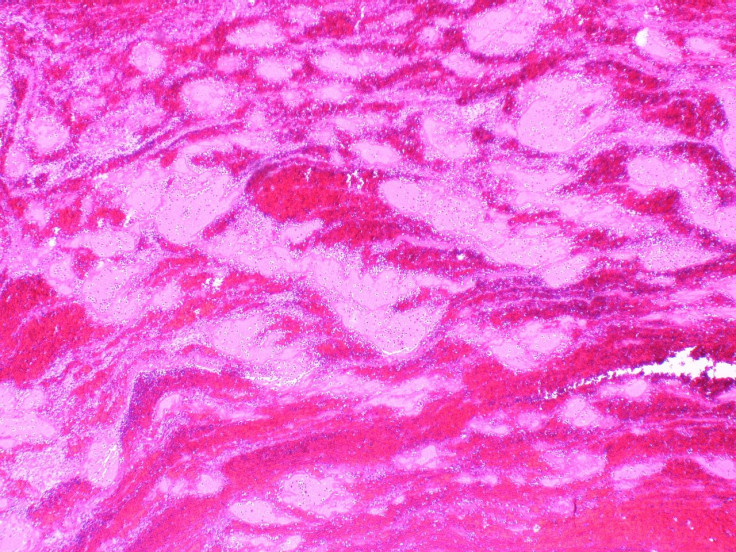Abdominal Blood Clots Found To Be Indicators Of Liver, Pancreatic Cancer

When it comes to cancer diagnosis, early detection is essential to stopping a tumor from spreading. Doctors will look for any sign that might indicate the disease in order to find it as quickly as possible and start treatment. In the past, researchers have known that certain types of blood clots, especially clots in the leg known as deep-vein thrombosis and clots in the lung called pulmonary embolisms increase a patient’s risk of a cancer diagnosis by three to four times within a year after finding the clot.
Researchers from Aarhus University Hospital in Denmark believe the presence of abdominal blood clots may also lead to a cancer diagnosis, and have made it the topic of their new study. They also believe that blood clots indicate poorer chances of survival in patients with already diagnosed cases of liver and pancreatic cancer. Their findings were published in the journal Blood.
There are several reasons doctors will look for cancer when blood clots are present. For one, cancer’s presence usually allows blood to clot more easily. Tumor growth may also cause blood clots, as an expanding tumor can restrict blood flow through veins. Surgery and inflammation due to cancer, or tumor growth in general, may damage blood vessels, which can also cause clotting.
As of now, there was little known about subsequent cancer diagnoses following blood clots in veins that carry blood to the liver, and other abdominal organs. These clots, known as splanchnic venous thrombosis (SVT), have been less frequently studied because they are rare, and usually only result from former health complications.
To find a link between SVT and cancer, researchers followed the medical records of 1,191 Danish patients who had been diagnosed with abdominal clots between the years 1994 and 2011. They followed these patients for a median of 1.6 years, tracking whether or not these patients were diagnosed with cancer after the clot. From this percentage, researchers were able to compare the risk of being diagnosed with cancer after experiencing SVT, to the rest of the general population’s risk. Researchers also looked at the survival rate of cancer patients who had experienced SVT as compared to cancer patients without the blood clot.
“As we learn more about the association between many types of thromboses and cancer, we also want to better understand these more rare clots and how they can perhaps signal a hidden cancer,” said Dr. Kirstine K. Søgaard of Aarhus University Hospital in a press release. “In this case, we had access to comprehensive data that we believed could provide insights useful to clinicians caring for patients with this condition.”
Researchers did find a likelihood of cancer diagnosis associated with SVT, observing that 183 of the 1,191 subjects were later found to have cancer, more than half of whom were diagnosed within three months of discovering the clot. Most of these patients were found to have liver, pancreas, or blood cancer. Once researchers compared this finding with the Danish national cancer rates, they found that patients with SVT were 33 times more likely to be diagnosed with cancer within the first three months of finding the clot.
Researchers then compared the survival rate of these patients to cancer patients who did not have SVT. Pancreatic and liver cancer survival outcomes were poor to begin with, but those with SVT in addition to one of these forms of cancer had a significantly lower chance of three month survival; they found that those with liver cancer had a 44 percent chance of survival compared to 55 percent without SVT, and for pancreatic cancer they found a 33 percent chance of survival, compared to a 53 percent chance in patients without SVT. Researchers did not find the same decrease in chances of survival with blood cancer, but they did find an increased likelihood of myeloproliferative neoplasms 12 months after SVT diagnosis.
“This study is the first to demonstrate in a large population that patients who develop splanchnic venous thrombosis are likely to be diagnosed with cancer within a relatively short time period,” said Søgaard. “As we continue to learn more about patients who suffer from these blood clots, it will be important to examine the pros and cons of screening for these hidden cancers.”
Source: Søgaard K, et al. Blood. 2015.



























